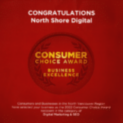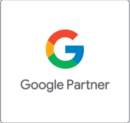This blog is meant to demystify retargeting – specifically as it pertains to paid online advertising – and highlight why you need to be utilizing this tactic for your eCommerce health and wellness brand.
Most eCommerce wellness companies have heard of retargeting and know it has value, some of them have tried it and a rare few have executed it successfully.
In many cases this is leaving a lot of potential gains on the table as retargeting can be a highly effective tactic to increase conversion rates and improve ROI.
< href="#web-design" data-type="internal" data-id="#web-design">1. What is Retargeting
< href="#sem" data-type="internal" data-id="#sem">2. Why Use Retargeting
< href="#analytics" data-type="internal" data-id="#analytics">3. How to Get Started with Retargeting
Let’s get retargeting!
1. What is Retargeting
To be clear, we’re going to focus on on-site interactions (essentially retargeting your website visitor audience). Often the terms ‘retargeting’ and ‘remarketing’ are used interchangeably. There’s also a difference between on-site interactions and off-site engagement (such as retargeting an audience that has engaged with your brand through a different platform or channel that isn’t your website).
Remarketing and off-site retargeting can also be effective tactics in your toolkit, but for this blog we’ll focus on website audience retargeting, so you can getting after some of that low hanging fruit!
So what is retargeting?
Retargeting is simply advertising exclusively to an audience that has already interacted with your business and brand!
That’s it! Pretty straightforward. Someone is in need of a product, they search for this product (exp. on Google they enter the query “best organic foodie product xyz”), they see your website for that particular search term and click on your link (because 75% of all clicks go to the first 3 ranked pages), they visit your website and check out your product page, browse around a bit, and then leave. This curious potential customer is now on your retargeting audience list and can be segmented and targeted with highly specific and relevant follow up advertising.
Let the retargeting begin!
2. Why Use Retargeting?
There are a lot of reasons why you should be using retargeting for your health and wellness eCommerce brand.
Some are obvious (higher conversion rates and better ROI!) and some not so obvious (Enhance cross-channel marketing efficacy and more effectively retain current customers).
Additionally, some eCommerce companies are ripe for retargeting (they have fantastic SEO with an already well-defined organic and engaged website audience with a very niche product) and some may need to be more strategic and patient when deploying this tactic (they’ll need to analyze their online marketing funnel, assess where retargeting can have the most impact, build a retargeting audience list and develop and test advertising copy prior to launch).
At North Shore Digital we take a deep dive into your business structure, website behavioural data and historic performance before developing a customized paid ads and retargeting strategy. ie. every business is unique and has very different challenges. Below are the top 5 biggest benefits of a well executed retargeting campaign.
- Advertise to prospects that have already interacted with your brand. It goes without saying that an audience segment that has already shown interest in your business and has some brand awareness is much more likely to convert to a paying customer. If you have the chance, why wouldn’t you start with targeting this segment first! Curiously, this is often the last audience segment businesses attempt to advertise to!
- Build trust. Research has consistently shown that it takes multiple interactions with your brand throughout the customer journey to convert to a sale. This is marketing 101 and sometimes called the “rule of 7”. Retargeting can help with subsequent steps along the marketing funnel and towards final purchase, making it much easier to identify and advertise to new potential customers.
- Build an engaged audience list asset. Most eCommerce business owners know how valuable a well cultivated email list is. Why not build the same asset for visitors closer to the top of your marketing funnel – those that have taken an action on your site but didn’t sign up for your newsletter/promotion/discount etc.
- Enhance bottlenecks in your marketing funnel. Gain more insight into your eCommerce conversion funnel, figure out where bounce outs are happening and which retargeting strategies work best to reengage these visitors.
- Higher current customer retention. Winning a new customer is the hardest step for any business. Entrepreneurs often toil for months or years paying themselves subsistence wages and offering heavily discounted or free product samples just to grow their customer base. We’ve found that our new eCommerce clients are often quite proactive with e-newsletters and social media to keep their current base of customers engaged, but they’re not using retargeting quite as effectively as a retention strategy (ie. targeting an audience that has already made an online purchase or, better yet, made a purchase in a specific timeframe or on a specific date like Valentine’s Day, Xmas, Father’s day etc.)
3. Get Started with Retargeting
To get started with retargeting you’ll need a paid ads account (such as Google Ads, Facebook Ads Manager etc.) and Google Analytics. For the sake of brevity I’ll assume you have both these things and I’ll focus on how to get started with Google Ads retargeting – as we feel this is the most robust and user friendly retargeting platform.
Set up Audiences in your Google Analytics Account. There are a few configuration steps you’ll have to take in Google Analytics to start collecting audience data:
- Make sure you’ve enabled remarketing. You can do this by going to Google Analytics Settings –> Property –> Audience Definitions –> Audiences and Enable Remarketing
- Set your Audience Destinations. If you’re using Google Ads you want to have this website audience data available in your Google Ads account. This simply involves checking off the Google Ads tick box (and making sure Google Ads has already been synced with Analytics – if you haven’t done this you’ll need to do it first)
- Create an audience! This should be based on your initial analysis of where retargeting may have the most impact and involves taking an honest look at your website marketing funnel (where are drop outs and bounces happening? Where are you seeing bottlenecks in your customer journey?) You might notice that you’re getting a ton of traffic to a specific product landing page but a very low conversion rate – this might lead you to specify an audience that has only visited this page. Alternatively you may find that you have a high abandon rate on your final payment page – in this case consider retargeting an audience group that has only made it to this final step. The best news? You can set up as many audience segments as you like and test and target to your hearts delight (we are big fans of methodically testing to find the best solution).
Next hop over to your Google Ads account. There are several retargeting campaigns you’ll be able to set up (such as RLSA, display and video retargeting) however we’ll focus on display retargeting here. RLSA (retargeting lists for search ads) has higher audience limits and video/youtube retargeting requires you to have video assets ready to go.
- Make sure your audience lists are populating. You can do this by going to Tools & Settings –> Shared Library –> Audience Manager. You should see all the audiences you’ve set up in Google Analytics.
- Use your lists! An efficient first step to utilizing your lists are deploying them in current campaigns as new Ad Groups. This way all the current settings and Ads will apply but now be laser focused on your retargeting audience. You’ll also have the additional benefit of a more controlled test – you’re holding all your variables constant (location, Ad images and descriptions, bid strategy etc.) and only adjusting the audience. This is the most effective way to test the performance of your new audience.
Of course there can be a lot more complexity and sophistication to setting up the most well optimized retargeting campaign but these simple steps should get you up and running and testing if this is an effective tactic for your business.
Don’t have the time to run your own campaigns? Give us a shout and learn more about how we can help your business.
Where do you need help?








